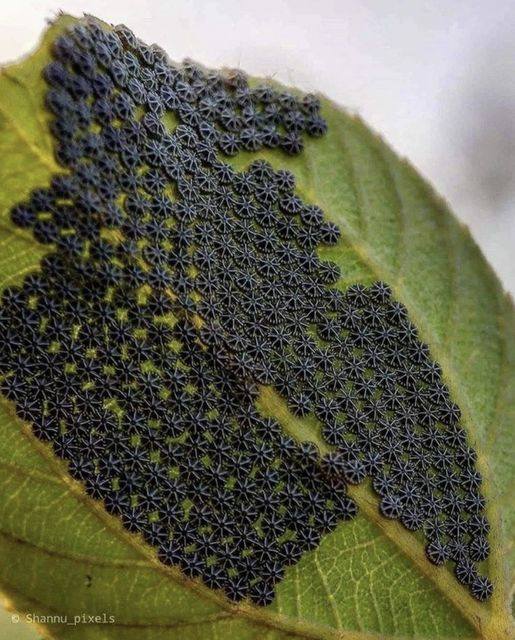ADVERTISEMENT
Don’t Touch These If You See Them on Your Plants: What They Are and How to Deal with Them
As any plant lover knows, keeping your greenery healthy and thriving can be a rewarding yet sometimes tricky endeavor. Plants are susceptible to a variety of pests, some of which can cause significant damage to your precious foliage if not addressed quickly. While it’s natural to assume that a plant’s beauty lies solely in its leaves and blooms, it’s important to pay attention to the critters lurking around them.
Some insects or fungi on your plants may look harmless, but others are dangerous and can cause lasting damage. If you spot any of the following on your plants, it’s best to avoid direct contact and take swift action. Let’s dive into the most common (and dangerous) plant pests and pathogens you should watch out for and how to handle them safely.
1. Spider Mites
What They Are: Spider mites are tiny, almost invisible creatures that often go unnoticed until the damage is done. These arachnids are less than 1mm in size and create webs on the undersides of leaves. While they might appear as little specks of dust, they are notorious for sucking the sap from plants, which weakens them over time.
Why You Should Avoid Touching Them: Spider mites can spread quickly and easily from plant to plant, especially in dry conditions. They can damage your plant’s leaves, causing them to discolor, curl, and eventually drop off. While they are not harmful to humans, disturbing their webs can further spread the infestation to other plants.
How to Deal with Them:
- Rinse the plant: Spray the plant with a strong stream of water, focusing on the undersides of leaves, to dislodge the mites.
- Use insecticidal soap or neem oil: Apply a natural pesticide to kill the mites without harming the plant.
- Quarantine: If you suspect spider mites on a new plant, keep it away from your other plants to prevent spreading the infestation.
2. Mealybugs
What They Are: Mealybugs are small, soft-bodied insects that resemble little cotton balls or fuzzy white patches. They often hide in the crevices of leaves, stems, and roots, feeding on plant sap and leaving behind a sticky residue. Mealybugs thrive in warm, humid environments and can cause stunted growth, yellowing leaves, and even plant death if not treated.
Why You Should Avoid Touching Them: Mealybugs can quickly spread from plant to plant, and disturbing them can cause them to scatter, making it harder to remove them effectively. Additionally, the sticky residue they leave behind can attract other pests like ants or mold.
How to Deal with Them:
- Isolate affected plants: Quarantine plants that show signs of mealybugs to prevent spreading.
- Manual removal: Use a cotton swab dipped in rubbing alcohol to remove mealybugs from your plants. The alcohol kills them on contact.
- Neem oil or insecticidal soap: These can also be used to treat a mealybug infestation safely.
3. Scale Insects
What They Are: Scale insects look like small, round, or oval bumps on the leaves or stems of your plants. These pests attach themselves to plants and suck out sap, leading to weak and deformed growth. Some scale insects excrete honeydew, which can attract mold or ants.
Why You Should Avoid Touching Them: While scale insects are not harmful to humans, disturbing them can cause them to break free and spread. They are often protected by hard, waxy exoskeletons that are difficult to remove with simple cleaning methods.
How to Deal with Them:
- Prune infected areas: If the scale insects are concentrated in one area, you can prune that part of the plant to limit the infestation.
- Apply rubbing alcohol: Use a cotton ball or cloth dipped in rubbing alcohol to wipe off the scale insects.
- Use insecticidal soap: Apply a gentle, plant-safe insecticide to control the infestation.
4. Whiteflies
What They Are: Whiteflies are tiny, winged insects that fly out in clouds when disturbed. They typically feed on the undersides of leaves, causing yellowing, wilting, and stunted growth. Whiteflies also excrete honeydew, which can lead to mold growth.
Why You Should Avoid Touching Them: Whiteflies are quick to fly away when disturbed and can easily spread to nearby plants. Their rapid reproduction rate means they can quickly turn a small issue into a large-scale infestation.
How to Deal with Them:
- Yellow sticky traps: Place yellow sticky traps near the affected plants to capture adult whiteflies.
- Use insecticidal soap: Spray your plants with insecticidal soap to kill both adults and larvae.
- Introduce natural predators: Beneficial insects like ladybugs or lacewing larvae are natural predators of whiteflies and can help control the population.
5. Aphids
What They Are: Aphids are small, soft-bodied insects that come in various colors, including green, black, and yellow. They are often found on new growth and undersides of leaves, where they suck sap from the plant, leading to distorted growth and yellowing leaves. Aphids can also transmit plant viruses.
Why You Should Avoid Touching Them: Aphids can spread quickly from plant to plant, and disturbing them can cause them to scatter. They also excrete honeydew, which can create a sticky mess that attracts other pests and fosters mold growth.
How to Deal with Them:
- Rinse the plant: Gently spray your plant with a strong stream of water to wash aphids off the leaves.
- Insecticidal soap or neem oil: These natural solutions can effectively eliminate aphids without harming your plants.
- Introduce natural predators: Ladybugs and lacewing larvae are natural predators of aphids and can help keep their population under control.
- For Complete Cooking STEPS Please Head On Over To Next Page Or Open button (>) and don’t forget to SHARE with your Facebook friends
